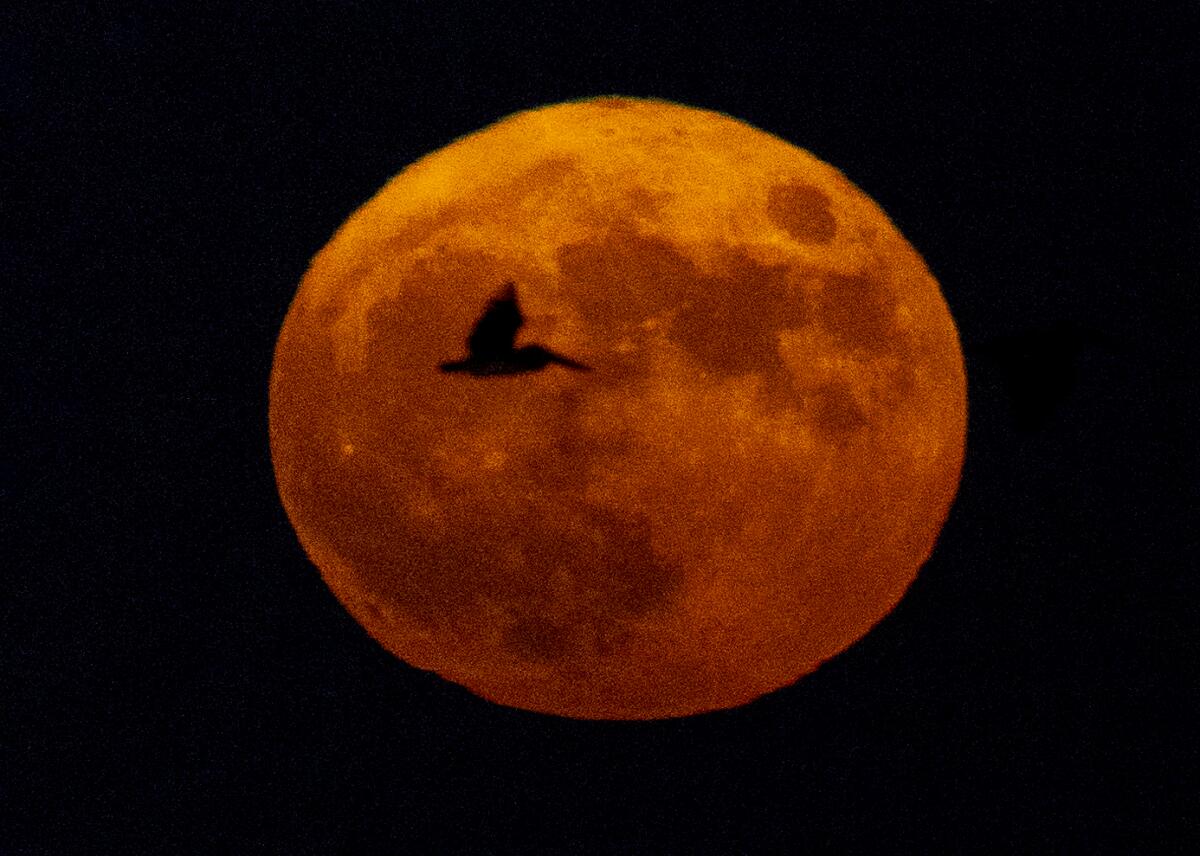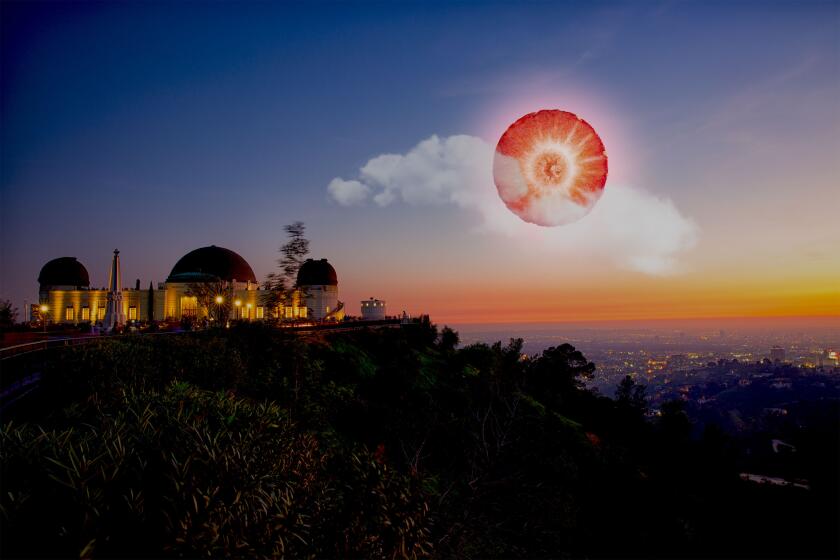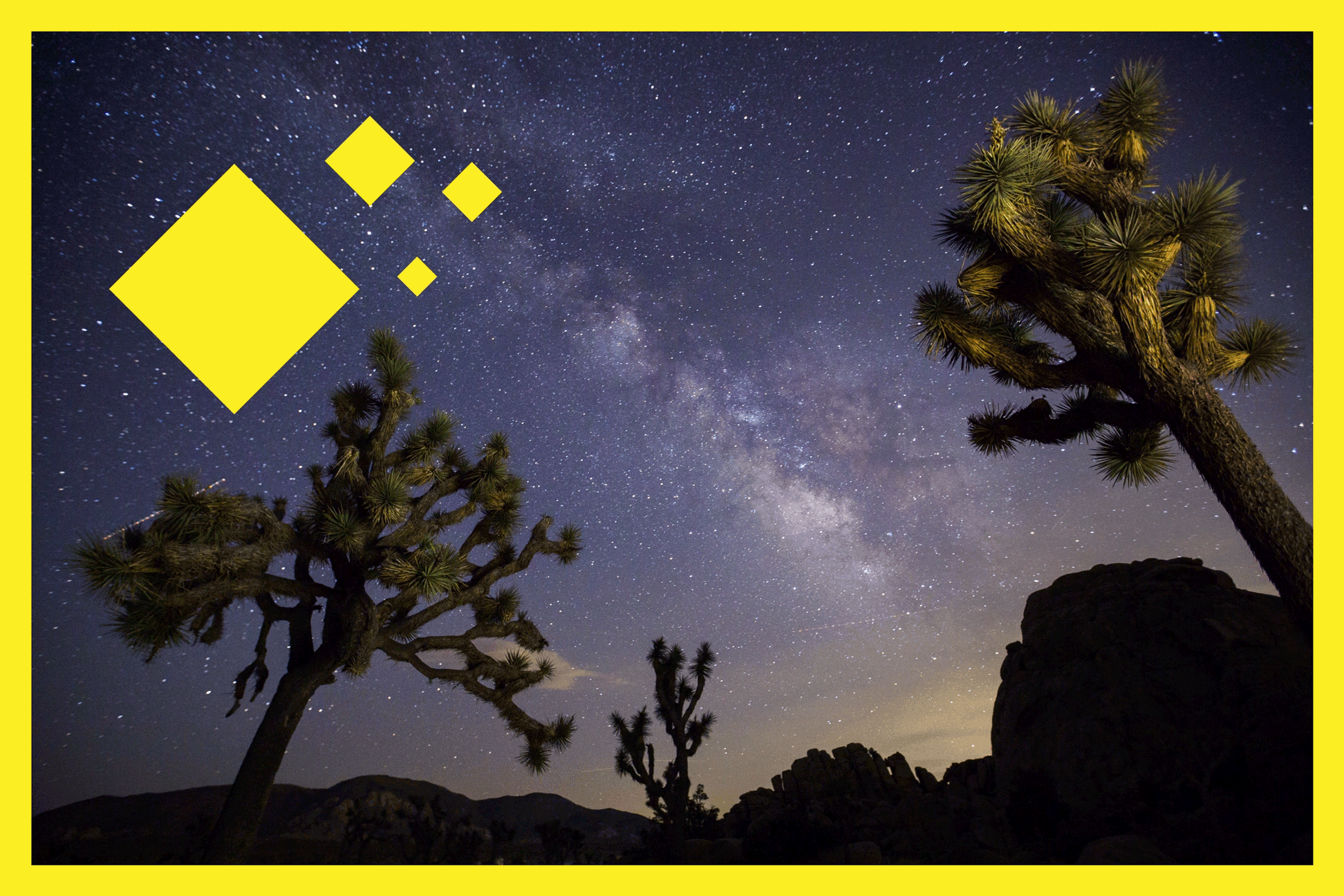August to kick off four straight months of supermoons. When to enjoy the spectacles

- Share via
The lunar cycle is about to enter a period that will showcase some of its most spectacular viewing, with Aug. 19 kicking off four straight months of supermoons — the brightest and largest full moons of the years.
“Two or three supermoons in a year is pretty normal, but four in a row is unusual,” said Tim Thompson, the science director at Mt. Wilson Observatory.
Supermoons are full moons that coincide with the moon’s closest approach to Earth in its orbit — a point known as the perigee — making the moon appear about 14% larger and 30% brighter than the faintest moon of the year, according to NASA.
While some say this a singular event of the year, most experts consider a supermoon any full moon that is within 90% of its closest approach to earth, which is why several can occur in a year.
The supermoons in August and November will be about 224,000 miles from Earth, while September and October will be slightly closer at about 222,000 miles. Thompson called the latter a “very near lunar perigee.”
It’s just too hot in L.A. Hiking at night during a full moon offers an opportunity for a different sensory experience while giving you a break from the relentless heat.
October’s supermoon will be slightly closer than September, or the most super of the supermoons, said Noah Petro, a lunar reconnaissance orbiter project scientist at NASA’s Goddard Space Flight Center. However, he said to an amateur observer, the slight difference between the four supermoons will be really difficult to perceive.
“It is a subtle difference, but it’s an excuse — that’s the part that’s important — ... [that] gets people interested in looking at it,” Petro said. “It’s the gateway moon.”
The four supermoons will occur on Aug. 19, Sept. 18, Oct. 17 and Nov. 15.
The August full moon will be particularly special, as it marks both a supermoon and a blue moon — often called a super blue moon — a rare coinciding phenomenon.
This supermoon is considered a blue moon not because of any expected color changes, but because it will mark the third full moon in a season with four full moons, Petro said. A full moon is also considered a blue moon when it is the second full moon in a single month, creating two definitions for the monthly and seasonal blue moons. This month’s moon will be a seasonal blue supermoon.
Once upon a time, a full moon was just a full moon. Now it’s an Instagram-fueled event with a parade of names, from ‘super’ to ‘strawberry.’ We take a look at the history of moon mania.
There’s no visual differences for a blue moon.
But Petro urged people not to get caught up in the specific dates, noting that any night is a good night to observe the moon, and to try to spot differences and simply enjoy the wonder.
“That’s the beauty of the phases of the moon, they repeat,” he said. Astronomers also noted that the three days around the supermoons will still appear full.
While supermoons have been met with a lot of hype in recent years, a much more rare and little-known occurrence related to the moon’s cycle is ongoing: the major lunar standstill.
Happening only every 18.6 years, the moon is now reaching the extremes of its orbit, marked by the moon rising and setting at its most northerly and southerly positions, extending beyond those of the sun, occurring during a period of about two years.
What to expect in SoCal’s night skies this spring and summer, and how to maximize your chance of spotting some spectacular sights.
“It’s rising farther south than the winter solstice sun,” said Vanessa Alarcon, the astronomical observer at the Griffith Observatory. “It’s actually pretty impressive when you see it.”
The Griffith Observatory has moonset lines set on its lower West Terrace, pointing to the exact spots on the horizon where the major lunar standstill will occur. But anyone can watch it by looking at where the moon rises on the eastern horizon and where it sets on the western horizon, Alarcon said. It’s best viewed during a full moon, but the phenomena will continue through much of 2025.
“Enjoying [the phenomena] is the ultimate goal,” Petro said. He said there’s no bad or good spot to observe the supermoons, and that people should not be discouraged if they miss the specific date or if the weather is bad.
“That’s the beauty of the phases of the moon, they repeat,” Petro said. “Dust off the binoculars, find those telescopes, and make an event of it.”
The International Observe the Moon Night will take place on Sept. 14, a few days before September’s supermoon.
More to Read
Sign up for Essential California
The most important California stories and recommendations in your inbox every morning.
You may occasionally receive promotional content from the Los Angeles Times.

















